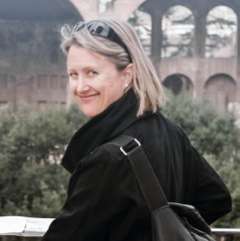Change is in the air at Ballet San Jose, and Saturday night’s star-studded gala to welcome new artistic director José Manuel Carreño proved this in a big way. Carreño’s arrival marks the close of a contentious chapter in Ballet San Jose’s history, after the forced departure of former artistic director and co-founder Dennis Nahat in early 2012. Cuban-born Carreño, a recently retired American Ballet Theatre principal, represents a new direction for Ballet San Jose, and judging from the high-octane talent imported for the night, and presence of artistic directors Kevin McKenzie (ABT) and Helgi Tomasson (San Francisco Ballet) in Saturday night’s audience, it is a bright path indeed.
The evening’s dancing commenced, oddly, with students of the Ballet San Jose school in The Gala March, a grand ensemble effort choreographed by Dalia Rawson. Set to a jaunty Tchaikovsky excerpt from Swan Lake, the students moved with great efficiency on and off the stage, each age group allotted their brief moments to perform, meeting together in the final moments of the piece to form an ensemble of over a hundred young dancers, all bright smiles and high enthusiasm.
The program continued with New York City Ballet’s Rebecca Krohn and Ask La Cour, performing Christopher Wheeldon’s affecting After the Rain, music by Arvo Pärt with musicians Keisuke Nakagoshi (piano) and Robin Mayforth (violin) bringing warmth and soulfulness that softened the stark, angular nature of the well-known piece and kept it from seeming overly familiar.
Ballet San Jose dancers, regretfully, performed in only one piece. But Jorma Elo’s Glow-Stop, set to the music of Phillip Glass, was a fine choice, showcasing twelve of the company’s thirty dancers. Finnish-born Elo’s contemporary choreography is striking and distinctive, requiring both speed and clear articulation. Crimson costumes and spotlight-driven lighting created an effective mood. It was not a perfect performance; pirouettes from the women lacked the incisive confidence seen through the rest of the night, and synchronicity in the ensemble work was sometimes off. Nonetheless, the overall impression was one of competence – no small feat when tackling Elo – sandwiched between premier performances by some of the country’s best dancers.
In a night chock-full of superlative talent, it’s hard to pick favorites. Nonetheless, great moments stood out, such as the way international artists Adiarys Almeida and Joseph Gatti engaged the audience in the pas de deux from Le Corsaire. Gatti, as Ali the slave, handled his role with an extravagant panache, delivering astonishing tucked-leg tours and jumps that seemed to defy gravity and drew attention to his impeccable technique. In turn, Almeida seemed to ramp up her game during her own solo, rapidly pounding out fouettés and triple pirouettes with precision, confidence and even glee. The two dancers’ enthusiasm and energy was infectious; the audience went wild.
American Ballet Theatre principals Julie Kent and Marcelo Gomes performed the balcony scene from Kenneth MacMillan’s Romeo and Juliet, in one of the night’s highlight performances for me. No flashy choreography here, simply lyrical movements that seemed to flow as effortlessly and romantically as Prokofiev’s music. The chemistry between the two dancers was palpable: they had a synergy that seemed to be missing in earlier numbers.
Marcelo Gomes demonstrated his versatility on a return to the stage with American Ballet Theatre soloist Misty Copeland in a performance of Twyla Tharp’s Sinatra Suite. Not being a Sinatra fan, at least for the ballet stage, I found the patterned lighting and Sinatra’s syrupy sentimentality to be more a deterrent than a boost. But Copeland, decked out in black dress and heels, was outstanding in the way she hurled herself into her performance, and committed herself wholly, as did Gomes. Tharp cleverly uses the darker side of Sinatra’s songs to create an image of love turned bittersweet. Copeland’s loose limbed athleticism made her look at times like a marionette in Gomes’ strong grip, utterly under his spell, unable to fully leave or stay.
Lighting and sets are difficult issues to tackle in gala performances that require a rapid shift from one pas de deux to the next, and this night was no exception. Costuming sometimes clashed with backdrop, leaching some of the power from Joaquin De Luz’s otherwise fine solo performance of David Fernandez’s Five Variations on a Theme. The live music, as well, was not without its occasional dissonance, notably from the strings section, that marred portions of Gillian Murphy and Thomas Forster’s Black Swan pas de deux performance.
Nothing, however, was big enough to detract from the fact that it was one marvel of a gala, an astonishing night of talent, celebrating a collaboration of artists and companies, and heralding exciting changes for Ballet San Jose. Their season commences in February, with three repertory programs to follow. With this extraordinary gala, they have drawn the public’s interest and eye. Here’s hoping Carreño and Ballet San Jose can keep up the momentum and take the company to the next level, without losing that which has been good all along.


